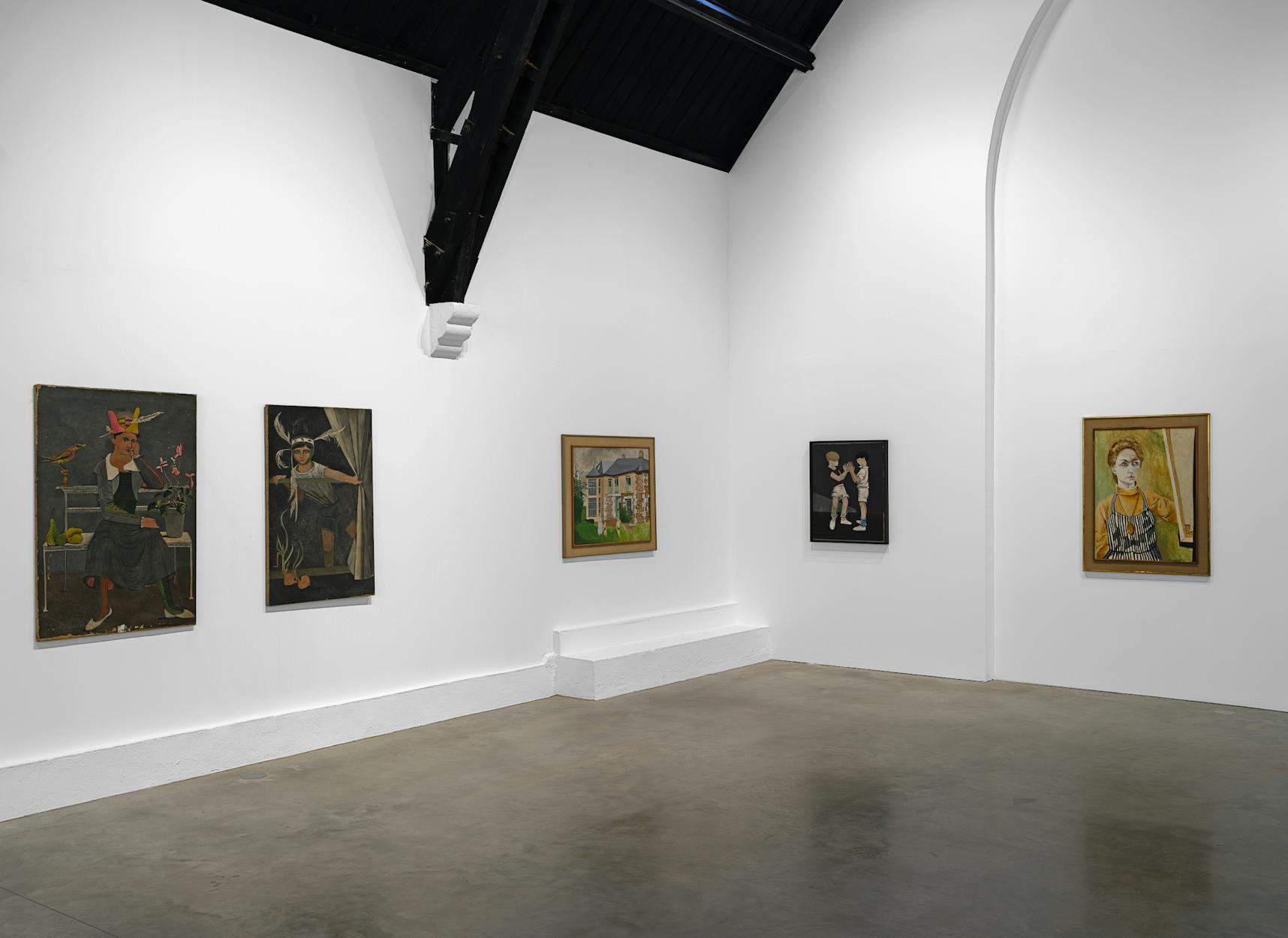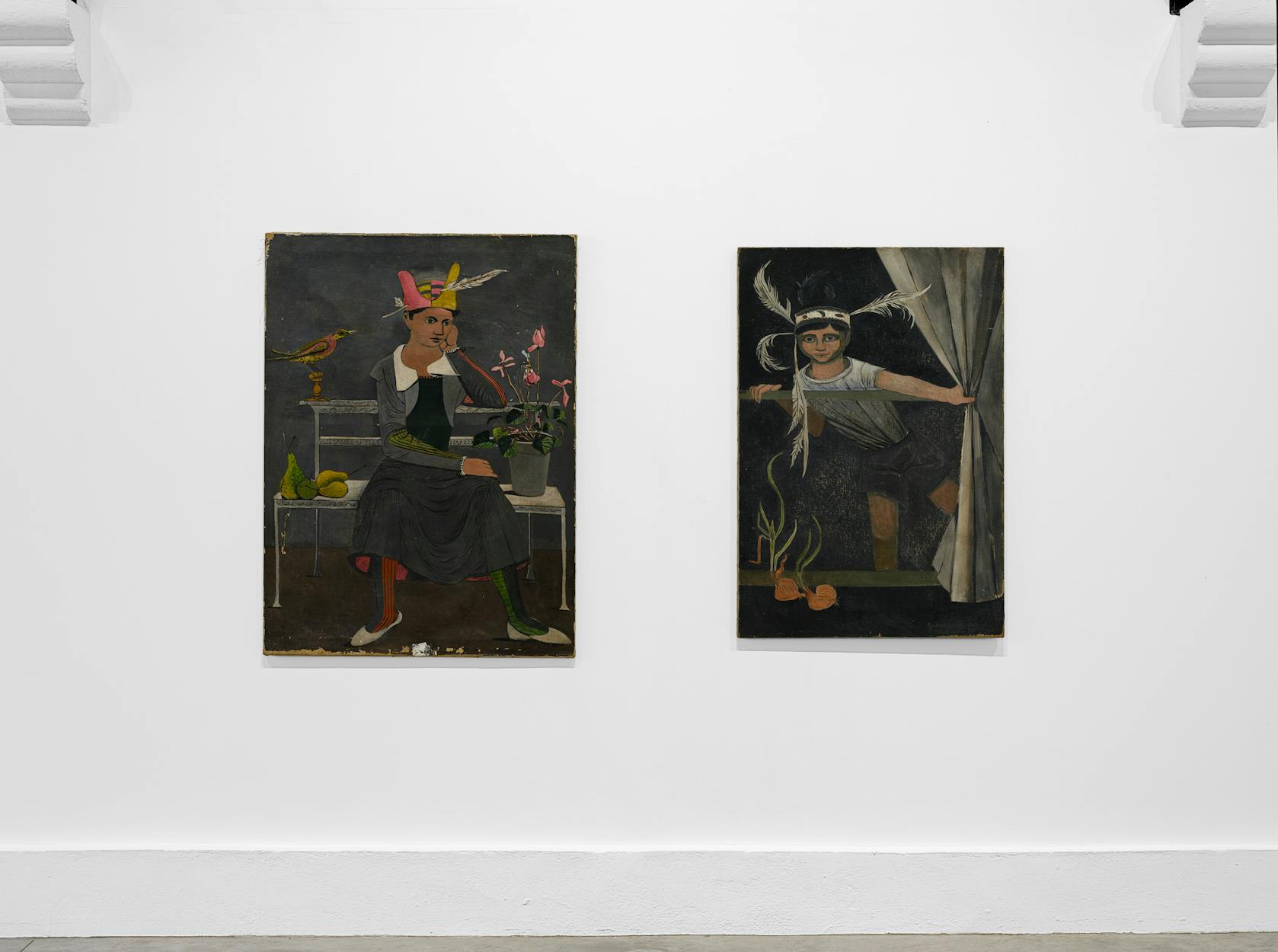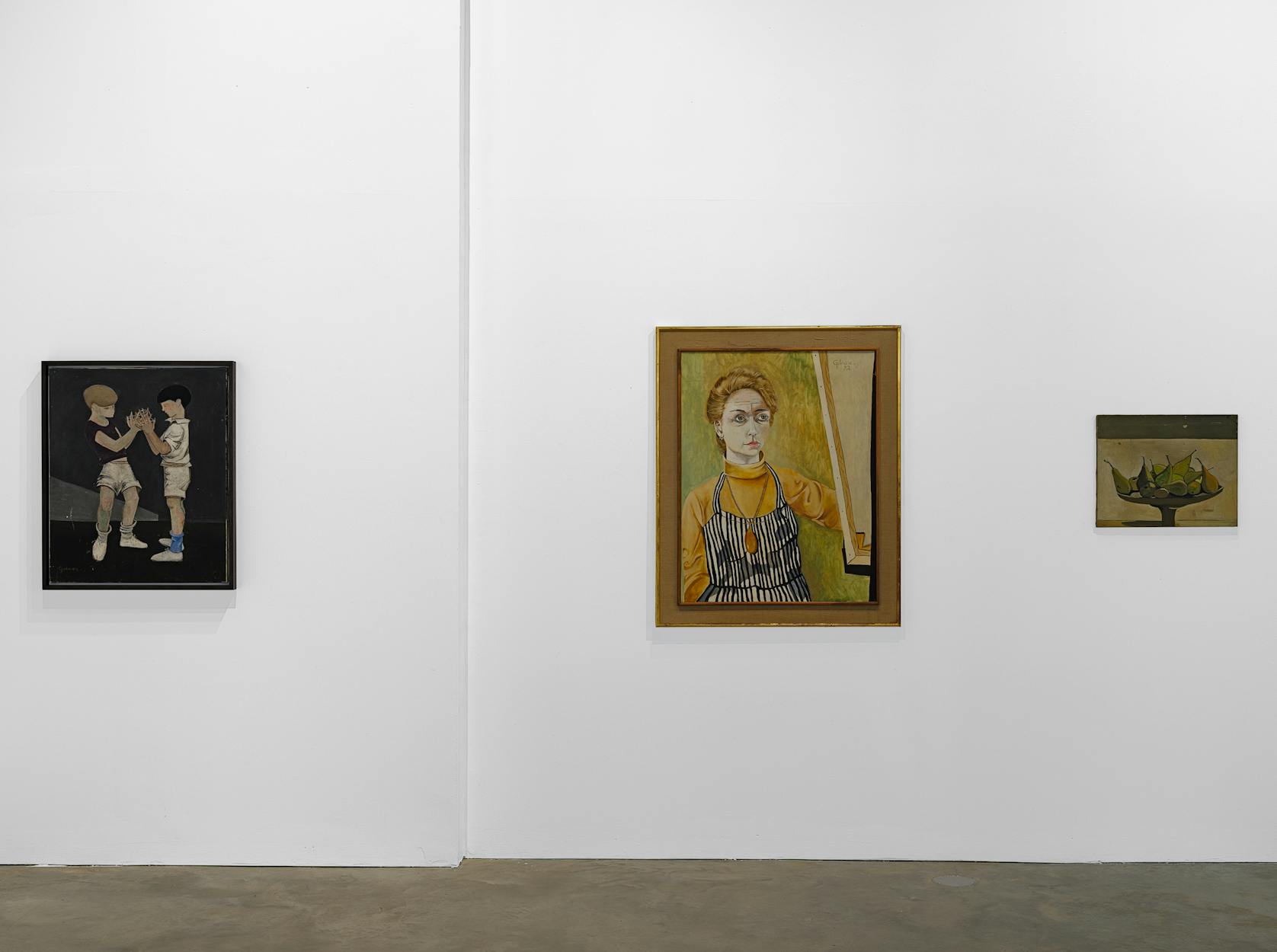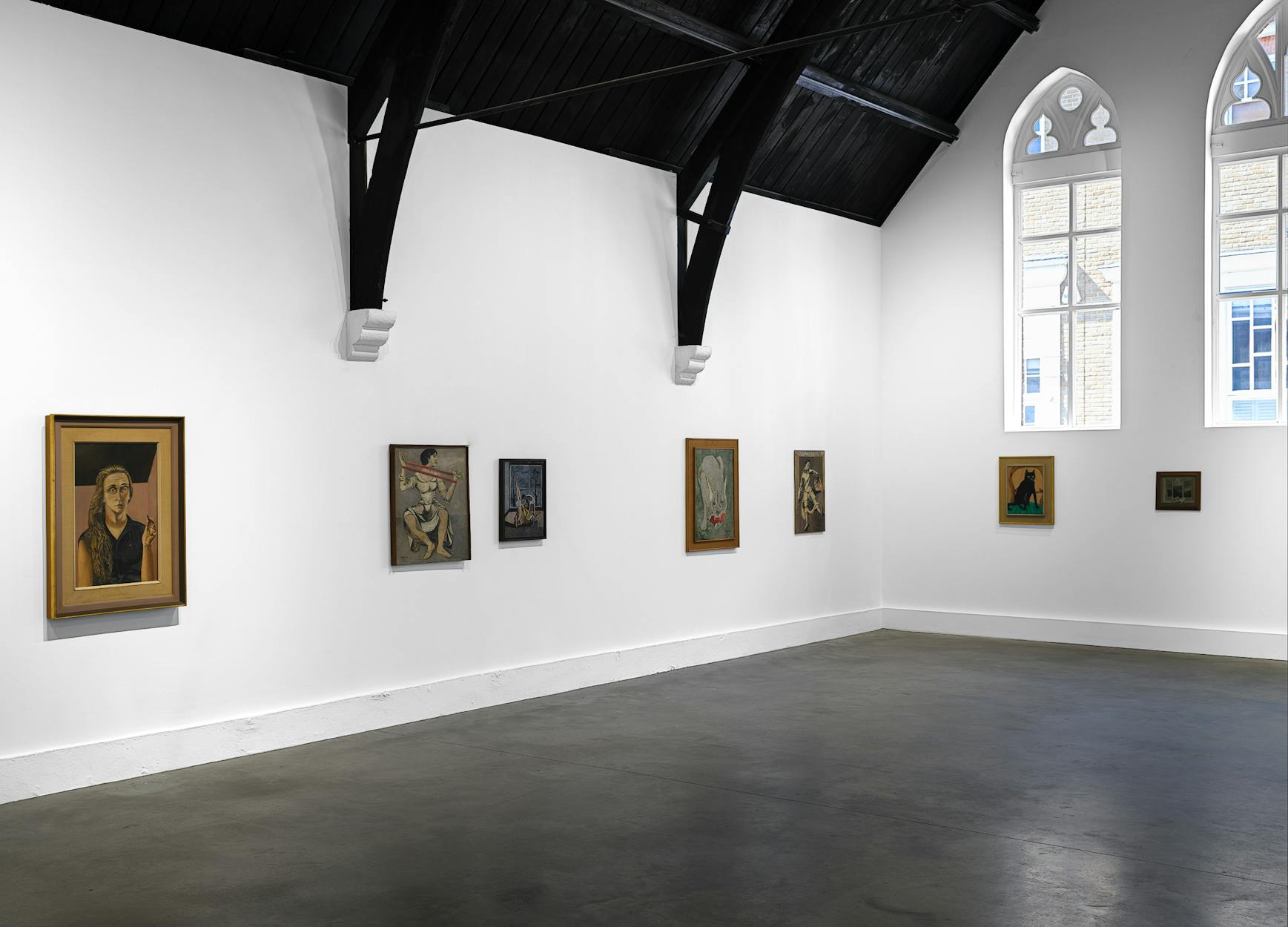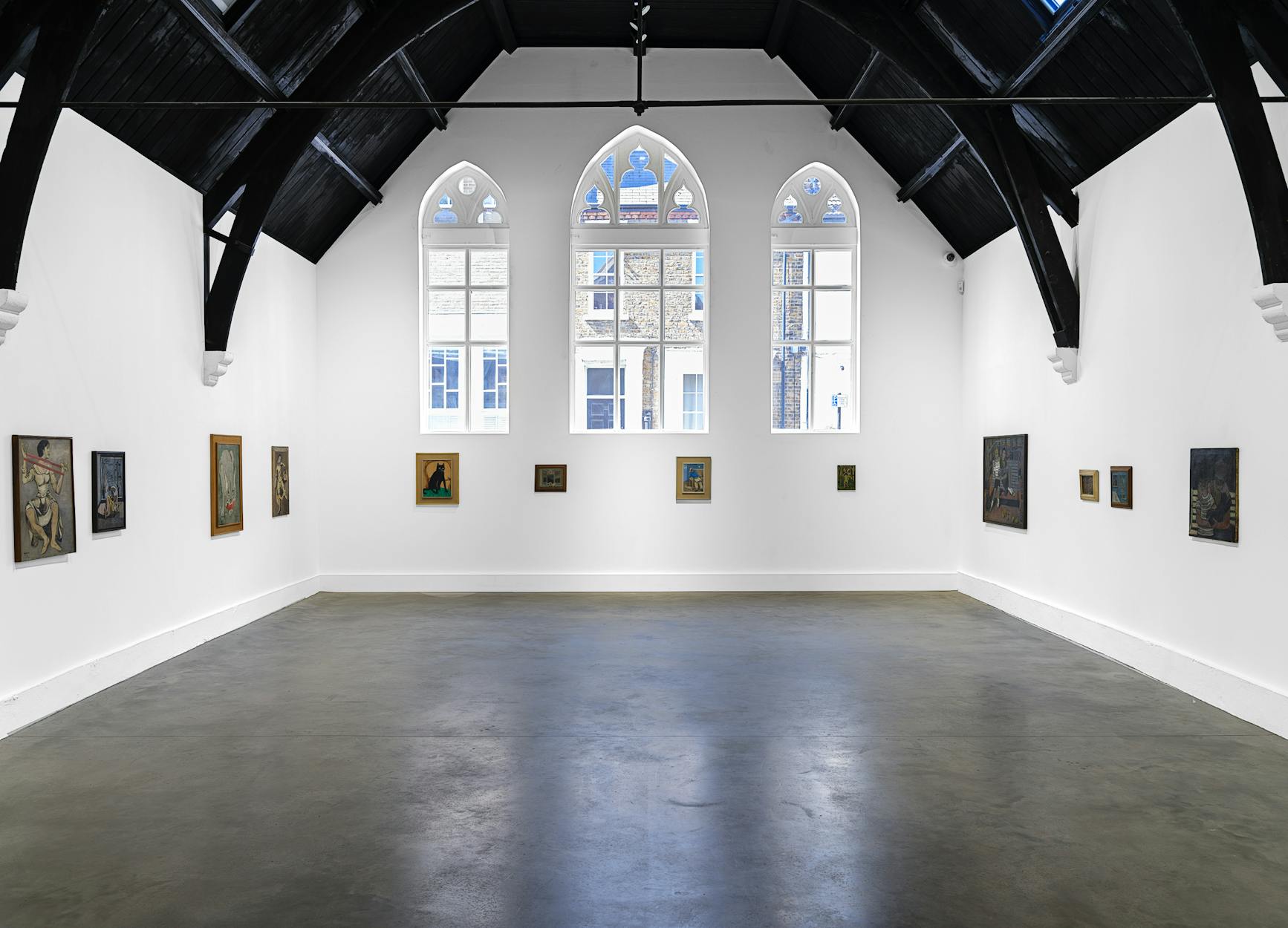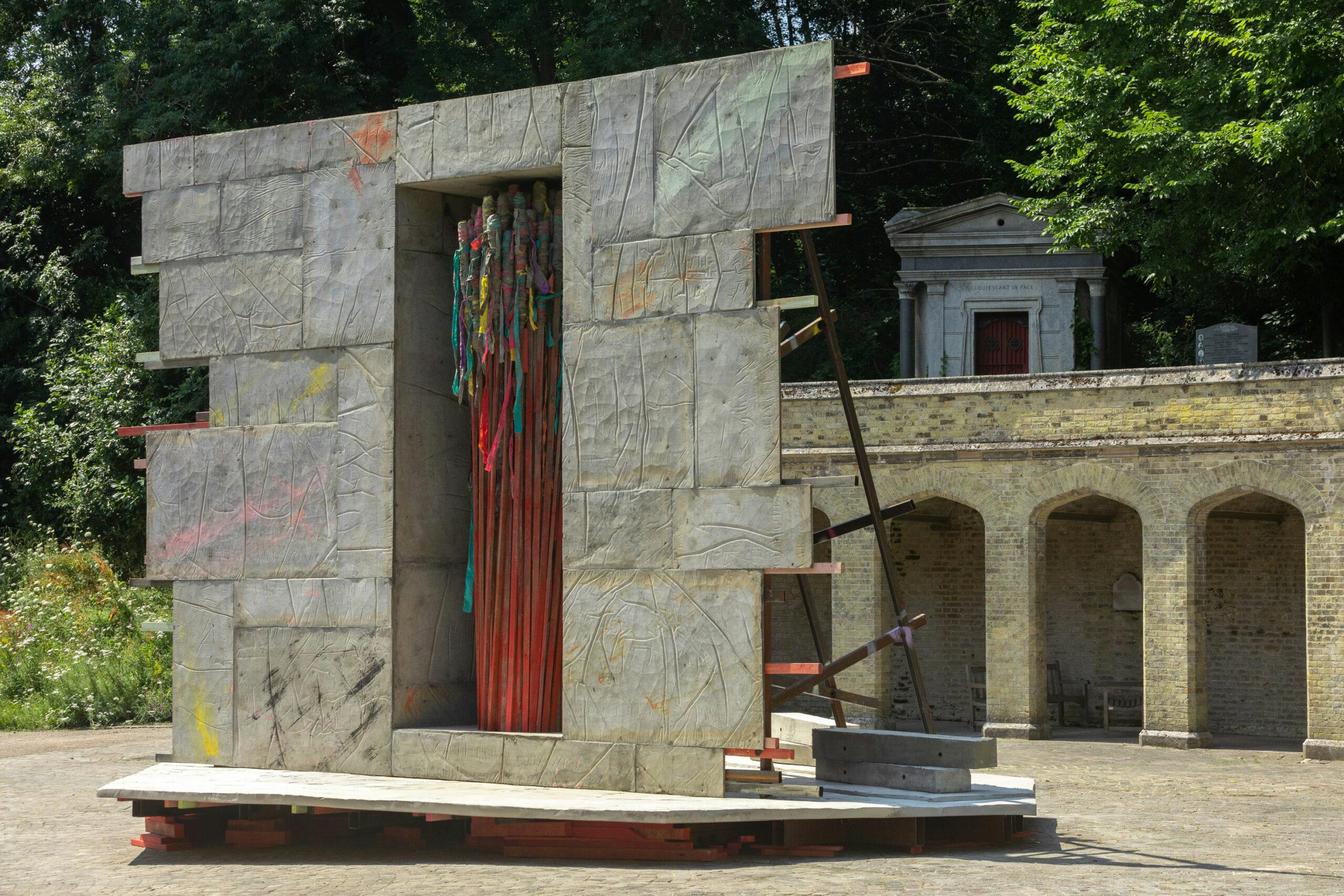The first institutional exhibition of Maeve Gilmore (b. 1917–d. 1983, London, UK).
Maeve Gilmore was a painter, writer and illustrator, and much of her work was autobiographical. Beginning with assured early self-portraits and still-life studies, Gilmore developed more explorative narrative works influenced by the modernist and avant-garde movements she studied during her travels through mainland Europe. Often working beyond canvas, Gilmore made use of the styles and techniques of applied arts in large painted screens, furniture and illustrative murals which encompassed entire rooms of the family home. In the later stages of her career, semi-abstract works took on spiritually inspired and gestural qualities but figurative painting remained a central concern with family life a constant subject throughout her practice.
While she found early success exhibiting in the 1930s and produced work throughout her life, Gilmore later committed herself to the work and career of her husband, the writer and poet Mervyn Peake who is best known for his Gormenghast series. Subsequently, very little of the artist’s work has ever been presented to contemporary audiences. Peake’s legacy and status today is at least partly attributable to Gilmore, who continued to promote, publish and exhibit Peake’s work after his death.
The exhibition at Studio Voltaire focused on a precise collection of her depictions of domestic life, portraiture and play, as well as distinctive compositional instincts such as her use of doorways and windows as framing devices. Gilmore often depicted her children: in a notable series from the early 1950s they are painted in athletic or gymnastic poses; elsewhere they are shown with the family cat or with one of their father’s many taxidermy birds. Though often presenting familiar subjects, Gilmore’s works appear surreal and dreamlike in composition and attitude. Motifs and objects repeated across multiple works begin to suggest a sophisticated symbolic language: skeins of yarn woven into elaborate cat’s cradles; pears or onions placed on benches; puckish, feather adorned head–dresses.
Viewed from both feminist and art historical perspectives, Gilmore’s work can be understood in a context that also includes artists such as Vanessa Bell and Winifred Knights, or the early British Surrealists Leonora Carrington, Eileen Agar and Ithell Colquhoun.
Gilmore was born in Acre Lane in Brixton, less than a mile from Studio Voltaire, and much of her archive has remained with family members in Clapham. Nearly four decades after her death, this was a rare opportunity to experience works by an important British artist of her period.

